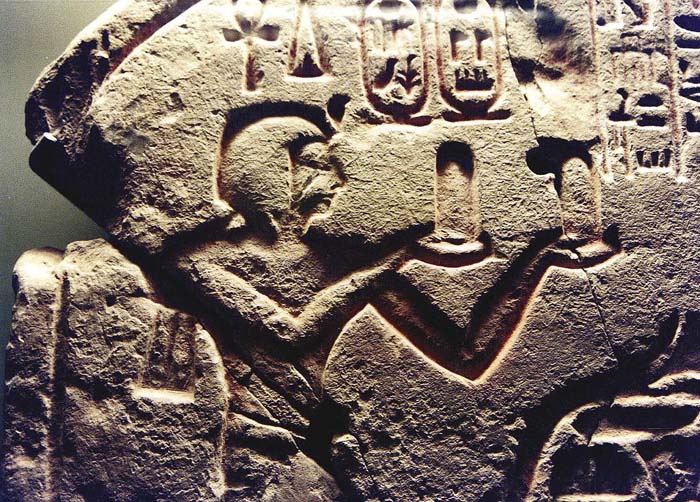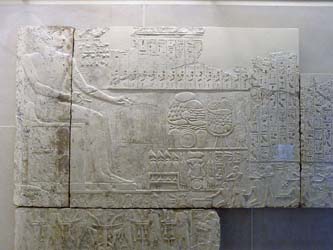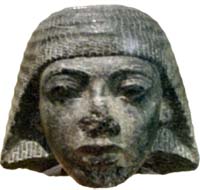Ramses I
Ramses I was not of royal blood, yet he became the founding pharaoh of the 19th dynasty. His reign was short and his impact upon Egypt was small, yet his descendants became as powerful as the great pharaohs of ancient Egyptian lineages. The mystery of his mummy would lead to his being well known centuries later and miles away from Egypt.
Military Roots
Ramses I was born into a common Egyptian family during the mid-14th century B.C. His father, Seti, was a well-known military troop commander in northern Egypt. His wife, Sitre, was also the child of a military man. Although the world would come to know him as Ramses I, his birth name was Paramessu.
Paramessu excelled as a military commander, exceeding his father's military rank. He found favor with Pharaoh Horemheb and soon became the second most powerful person in Egypt.
Titles Paramessu held included:
- Master of Horse
- Commander of the Fortress
- Controller of the Nile Mouth
- Charioteer of His Majesty
- King's Envoy to Every Foreign Land
- Royal Scribe
- Colonel
- General of the Lord of the Two Lands
- Vizier
Like Paramessu, Horemheb was a former military commander, leading successful campaigns under previous pharaohs. As Horemheb had no heir, he named his close friend and confidant Paramessu as his successor.
Short Reign
Paramessu became pharaoh upon the death of Horemheb in approximately 1820 B.C. He took the name of Ramses I, which meant “Ra has fashioned him.” Along with other versions of his name, including Rameses and Ramesses, the Pharaoh was also known as Eternal is the Strength of Ra and He Who Confirms Ma’at Throughout the Two Lands.

© Juan Rodríguez Lázaro - Relief of Ramses I making an offering before Osiris
Egyptologists estimate that King Ramses was approximately 50 years old at the time of his coronation, an age considered quite elderly during this time period. His only child, Seti I, served as the vizier and leader of Egypt’s military campaigns during Ramses’ rule. After approximately 16 to 24 months of leadership, Ramses I died in 1318 B.C., leaving the throne to his son.
Ramses I did not leave a huge mark on Egypt when compared to the pharaohs before and after. He continued the work of previous pharaohs to restore the old religion. During his reign, he ordered additions made to the Nubian garrison at Buhen in southern Egypt. He began the process of adding reliefs on the Second Pylon at the Karnak Temple in Thebes, and also started a chapel and temple at Abydos. Both projects were unfinished at his time of death and finished by Seti I.

© John Campana - Reliefs of Ramses I
Around the World
Like many of Ramses’ projects, his own tomb was unfinished. Seti I would later establish shrines dedicated in his father’s memory. Ramses' wife would set a new precedent by being later buried in her own tomb, instead of with her husband. King Ramses' tomb was mostly empty when discovered in 1817. Only the burial chamber was decorated. Tomb raiders had ravaged the space. Not only was everything of value missing, but the mummy of King Ramses was also absent.
According to historical evidence, the mummy of Ramses was part of a mass reburial of royal mummies in a cache during the Third Intermediate Period. The purpose was to re-consecrate and protect the kings whose tombs had been robbed.
In 1881, the Egyptian Antiquities Service revealed the mummy cache. The cache had been hidden in the tomb of Queen Ahmose-Inhapi. When Egyptologists opened the coffin bearing the name of Ramesses I they found the coffin empty.
The location of the mummy remained a mystery until the Niagara Museum and Daredevil Hall of Fame in Canada closed in 1999. Their collection of Egyptian antiquities was sold to the Michael C. Carlos Museum in Atlanta, GA. In the collection was a mummy later identified as Ramses I by using physical evidence and modern imaging techniques. In 2004, the Carlos Museum featured Ramses’ mummy in a celebration of finding the lost pharaoh. The museum then returned the mummy home to Egypt.
Quick Facts
- Ramses I was the first pharaoh of the 19th dynasty.
- Later efforts of his successors to rewrite history left the dates of his reign as only estimates.
- Ramses reigned for less than two years.
- He ordered the removal of several previous kings from the King List, including the name of Queen Hatshepsut.
- Eleven pharaohs would take his name, including his grandson, Ramses the Great.
- His mummy would leave Egypt sometime in the early 1800’s and would return in 2003.

